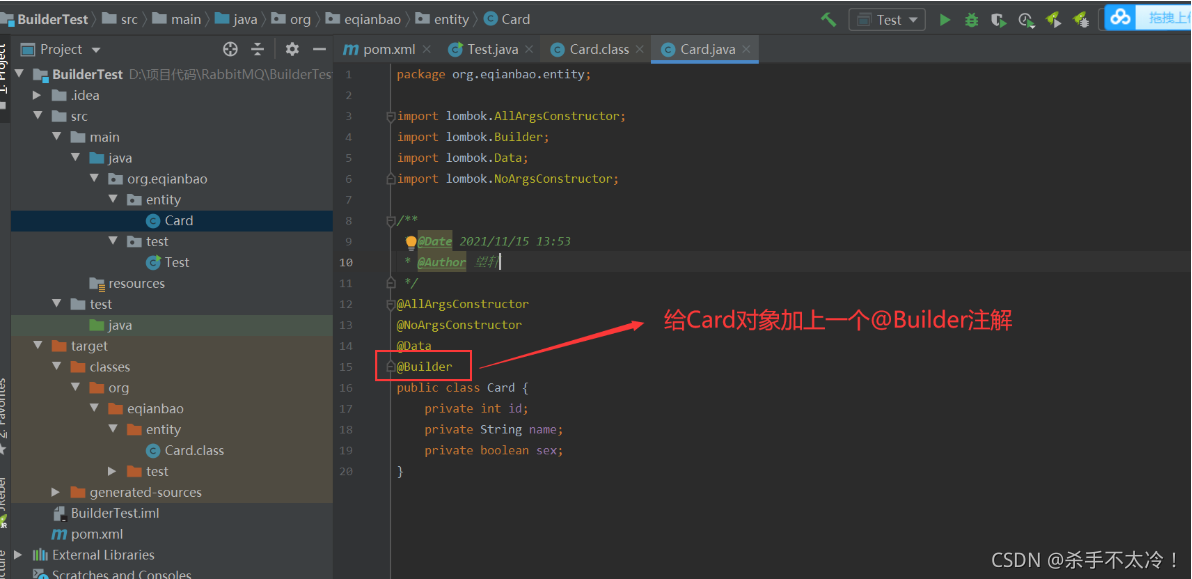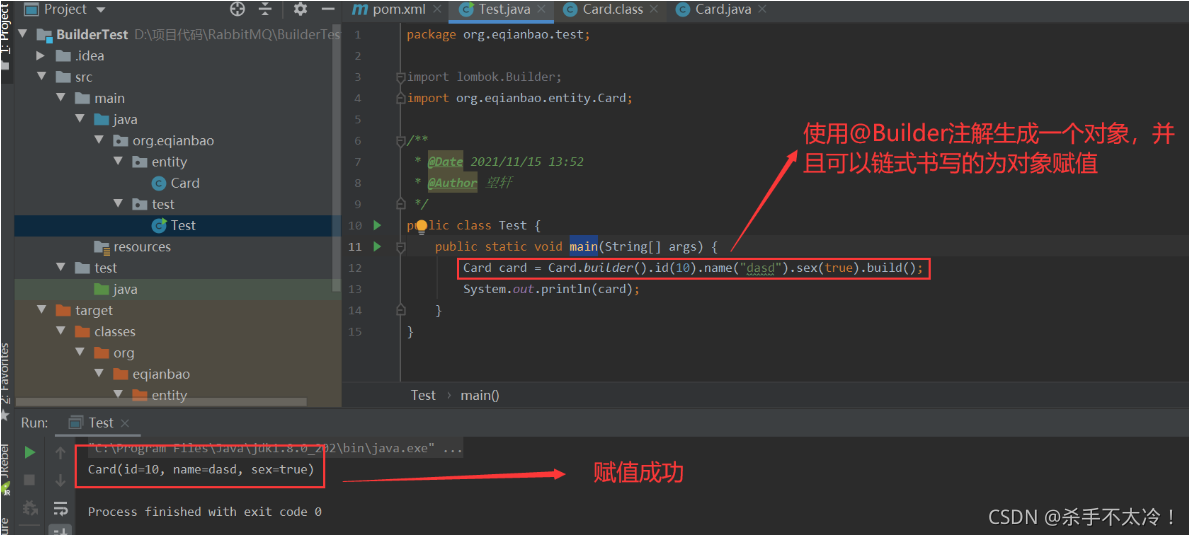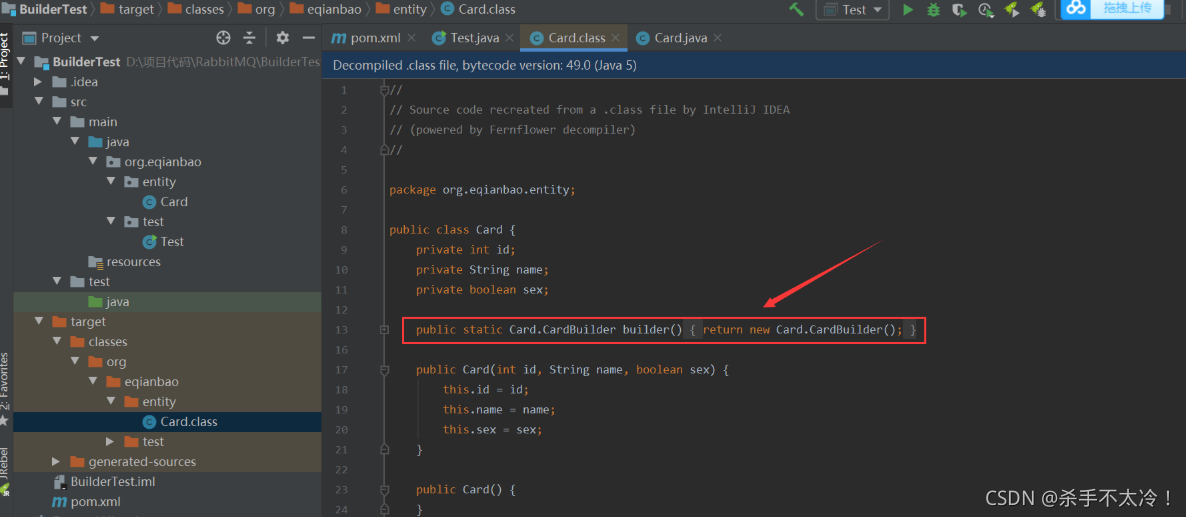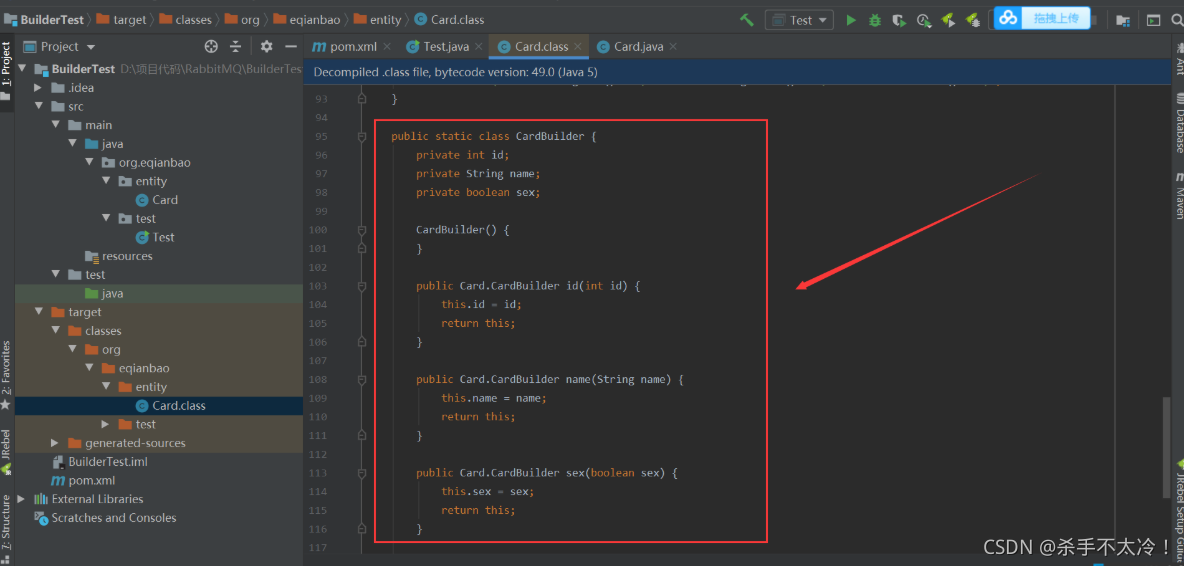Lombok @Builder注解 聊聊Lombok中的@Builder注解使用教程
杀手不太冷! 人气:1想了解聊聊Lombok中的@Builder注解使用教程的相关内容吗,杀手不太冷!在本文为您仔细讲解Lombok @Builder注解的相关知识和一些Code实例,欢迎阅读和指正,我们先划重点:Lombok,@Builder注解,Lombok,@Builder注解使用,下面大家一起来学习吧。
Lombok中的@Builder注解的使用
作用
@Builder注解的作用主要是用来生成对象,并且可以为对象链式赋值。
引入依赖
因为@Builder注解是lombok中的东西,所以第一步我们需要引入lombok的依赖,如下图:

第二步给实体类加上@Builder注解
第二步我们需要给我们的实体类加上一个@Builder注解,如下图:

第三步使用测试使用@Builder注解生成对象

实体类加上@Builder注解之后的编译结果
实体类加上@Builder注解之后,编译之后会多出一个builder()方法,和一个CardBuilder静态内部类,如下图:


代码如下:
public class Card {
private int id;
private String name;
private boolean sex;
public static Card.CardBuilder builder() {
return new Card.CardBuilder();
}
public Card(int id, String name, boolean sex) {
this.id = id;
this.name = name;
this.sex = sex;
}
public Card() {
}
public int getId() {
return this.id;
}
public String getName() {
return this.name;
}
public boolean isSex() {
return this.sex;
}
public void setId(int id) {
this.id = id;
}
public void setName(String name) {
this.name = name;
}
public void setSex(boolean sex) {
this.sex = sex;
}
public boolean equals(Object o) {
if (o == this) {
return true;
} else if (!(o instanceof Card)) {
return false;
} else {
Card other = (Card)o;
if (!other.canEqual(this)) {
return false;
} else if (this.getId() != other.getId()) {
return false;
} else {
Object this$name = this.getName();
Object other$name = other.getName();
if (this$name == null) {
if (other$name == null) {
return this.isSex() == other.isSex();
}
} else if (this$name.equals(other$name)) {
return this.isSex() == other.isSex();
}
return false;
}
}
}
protected boolean canEqual(Object other) {
return other instanceof Card;
}
public int hashCode() {
int PRIME = true;
int result = 1;
int result = result * 59 + this.getId();
Object $name = this.getName();
result = result * 59 + ($name == null ? 43 : $name.hashCode());
result = result * 59 + (this.isSex() ? 79 : 97);
return result;
}
public String toString() {
return "Card(id=" + this.getId() + ", name=" + this.getName() + ", sex=" + this.isSex() + ")";
}
public static class CardBuilder {
private int id;
private String name;
private boolean sex;
CardBuilder() {
}
public Card.CardBuilder id(int id) {
this.id = id;
return this;
}
public Card.CardBuilder name(String name) {
this.name = name;
return this;
}
public Card.CardBuilder sex(boolean sex) {
this.sex = sex;
return this;
}
public Card build() {
return new Card(this.id, this.name, this.sex);
}
public String toString() {
return "Card.CardBuilder(id=" + this.id + ", name=" + this.name + ", sex=" + this.sex + ")";
}
}
}
加载全部内容